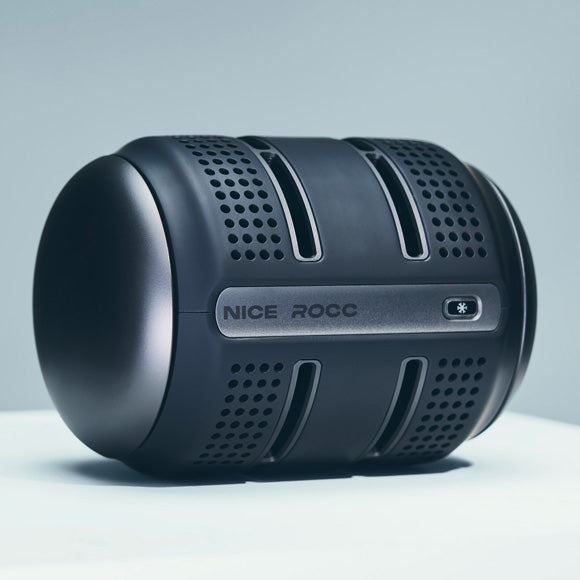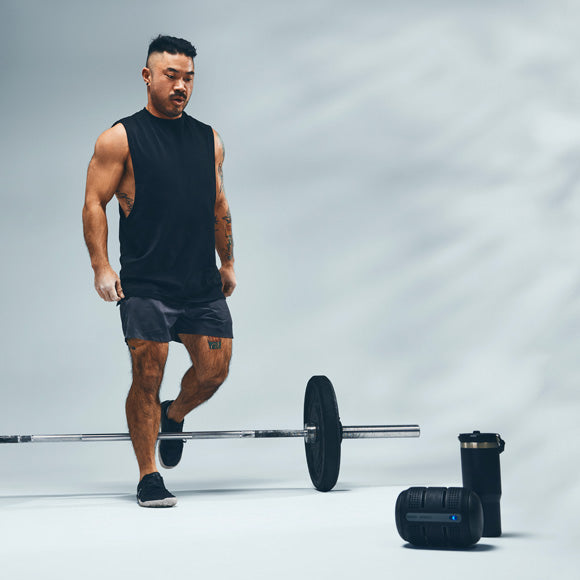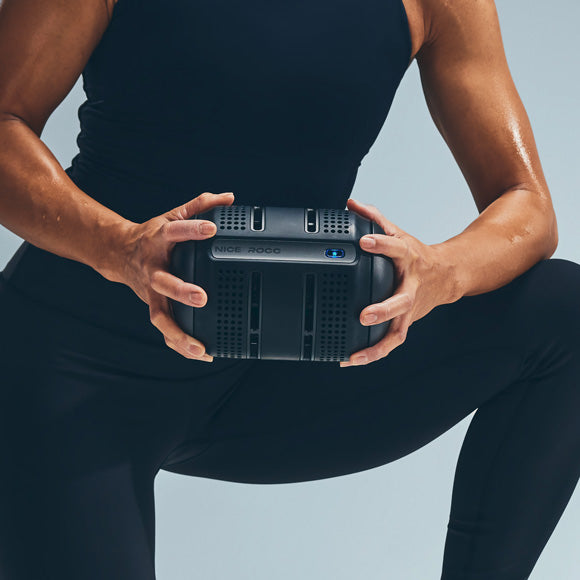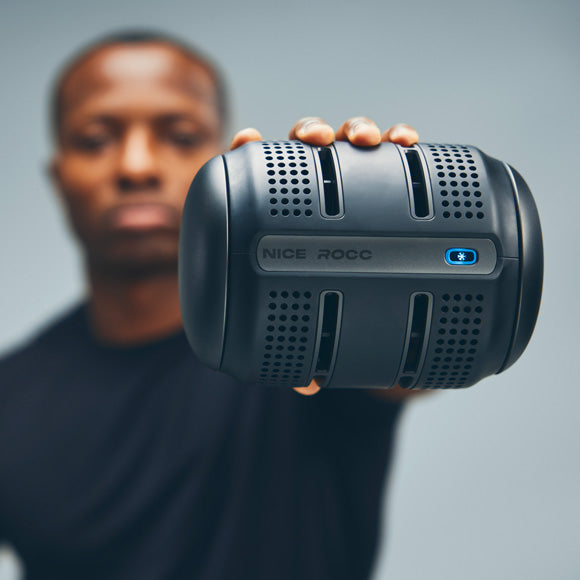In elite sports, every marginal gain counts. Professional athletes in basketball, football, hockey, track, and Olympic disciplines have embraced palm cooling to maintain speed, curb fatigue, and enhance recovery. This scientifically backed practice is quietly reshaping how training sessions are structured, how athletes recover between high-intensity efforts, and how teams prepare for competition in challenging conditions.
The adoption of palm cooling at the highest levels of sport is driven by a single truth: controlling body temperature is as critical to performance as strength, skill, or strategy (Stanford University).
Why Elite Athletes Turn to Palm Cooling
High-intensity sports naturally generate significant internal heat. This thermal buildup can diminish muscle efficiency, accelerate fatigue, and extend recovery time. Common cooling methods like ice baths, cold towels, and fans can be helpful, but they are often too slow to act, require large equipment, or disrupt the flow of competition.
Palm cooling offers a precise, science-backed alternative. It works by targeting specialized blood vessels in the palms called arteriovenous anastomoses (AVAs). These vessels can carry large volumes of warm blood close to the skin’s surface, where it can be rapidly cooled before circulating back through the body (ResearchGate). By tapping into this natural heat exchange pathway, athletes can lower core temperature far more efficiently than with traditional cooling methods.
This approach enables athletes to reduce heat stress without the delays or logistics that make conventional cooling impractical during short rest periods. In sports where seconds matter, between plays, sprints, or shifts, those saved moments can mean the difference between peak performance and fatigue.
Palm Cooling in Action: From Courts to Fields
Palm cooling methods, like the advanced NICE ROCC device, have been spotted in use on the bench at NHL games, in training with NFL and MLB teams, and on the court by top tennis pros at the US Open and during NBA games.
Court-Side Applications
Basketball, both at the NCAA Division I level and in the professional ranks, has seen growing adoption of palm cooling (Wired). Players often use it during brief breaks in play, such as timeouts or between quarters, to quickly normalize heart rate, regulate breathing, and prepare for the next burst of high-speed action. In a game where pace changes rapidly and endurance is tested repeatedly, efficient thermal regulation can help keep shooting accuracy, defensive intensity, and reaction speed consistent.
Field-Level Use
On the football field, palm cooling is becoming an important tool for managing the effects of heat stress during training camps, warm-weather games, and intense practice sessions. Athletes may incorporate palm cooling during sideline breaks to sustain explosiveness for sprints, tackles, and rapid play changes. By reducing internal temperature, they can limit the negative effects of overheating, such as slower reaction times or reduced muscle output late in games.
Across the Competition Spectrum
Palm cooling has also been integrated into training and competition routines in hockey, track and field, and Olympic sports (Proto.life). In hockey, where players experience intense bursts of energy and heavy gear insulation, targeted cooling during bench shifts helps manage fatigue. In track and field, palm cooling between sprint heats or jumping rounds can help maintain optimal performance across events. Even in endurance-heavy sports like cycling or rowing, palm cooling during strategic pauses can support sustained output over long durations.
The Science Behind Palm Cooling
Palm cooling is not just a trend; it is rooted in decades of research. Studies at Stanford University in the early 2000s identified how specialized heat exchange structures in the palms could be leveraged to cool the body rapidly. The team’s research demonstrated that targeted palm cooling could lower core body temperature faster and more effectively than general cooling methods.
In strength training, the results have been equally impressive. Controlled studies have shown that incorporating cooling between sets can produce significant performance gains. One study reported a 144% increase in pull-up volume over a six-week period, along with substantial improvements in bench press strength and total work capacity (International Journal of Exercise Science).
A landmark 2012 study even noted that the rate of progress from palm cooling in certain resistance training programs rivaled results seen with performance-enhancing drugs, without the risks or ethical concerns.
More recent research has extended these findings to sport-specific applications. A 2025 randomized controlled trial found that palm cooling improved repeat sprint ability in female collegiate athletes after fatigue-inducing protocols. The athletes maintained higher output and demonstrated faster recovery compared to control groups, reinforcing palm cooling’s practical value in high-intensity sports.
Advantages for Pro-Level Training
1. Efficient Recovery Between Efforts
Palm cooling works within minutes, making it ideal for the short breaks common in professional sports (Wired). Athletes can recover enough thermal balance to maintain peak output without extended downtime.
2. Lowered Fatigue and Improved Heart Rate Recovery
By managing core temperature, palm cooling helps lower post-effort heart rates and accelerates return to baseline. This allows for stronger performance in subsequent efforts and reduces the risk of performance decline late in games.
3. Trusted in Hot Conditions
When competition takes place in hot or humid environments, palm cooling provides a reliable way to manage heat stress (Reuters). Athletes can sustain performance levels without the drop-off typically seen in extreme conditions.
4. Compact and Practical
Palm cooling methods require little space and can be deployed in almost any athletic setting, from the sidelines of a stadium to a track infield or the corner of a weight room. They integrate seamlessly into existing recovery protocols without interfering with the rhythm of training or competition.
Frequently Asked Questions (FAQ)
Q: What makes palm cooling effective for pro athletes?
A: It taps into palm blood vessels that rapidly cool core temperature, helping athletes sustain power and reduce fatigue between high-effort intervals.
Q: Which sports use palm cooling?
A: It is used across basketball, football, hockey, track, baseball, soccer, and Olympic sports in any context where quick cooling between efforts supports recovery and output.
Q: How quickly does palm cooling work?
A: Benefits typically occur within one to three minutes, making it compatible with short rest periods in training or games.
Q: Can palm cooling help in hot environments?
A: Yes. By managing core temperature, it supports performance sustainability and reduces heat-related fatigue when conditions are warm.
Q: Is palm cooling safe for frequent use?
A: Yes. It is non-invasive and safe for most healthy athletes. Still, consultation with sports professionals is recommended when integrating new recovery techniques.
Q: How much performance improvement can be expected?
A: Studies show notable gains in strength and work volume, up to 144% in pull-ups, plus enhanced repeat sprint performance, supporting palm cooling as a high-value recovery strategy.
Optimize Every Competitive Edge with Palm Cooling
Palm cooling has emerged as a subtle yet impactful tool in elite sports. It helps athletes sustain speed, reduce fatigue, and maximize recovery with minimal disruption. Teams across multiple disciplines now recognize it as more than a recovery method; it is a competitive advantage.
For athletes aiming to maintain intensity across training sessions and competition, palm cooling with the NICE ROCC offers a proven, research-backed way to keep performance levels high. By managing heat stress efficiently, it enables competitors to stay sharper, stronger, and more consistent when it matters most.




